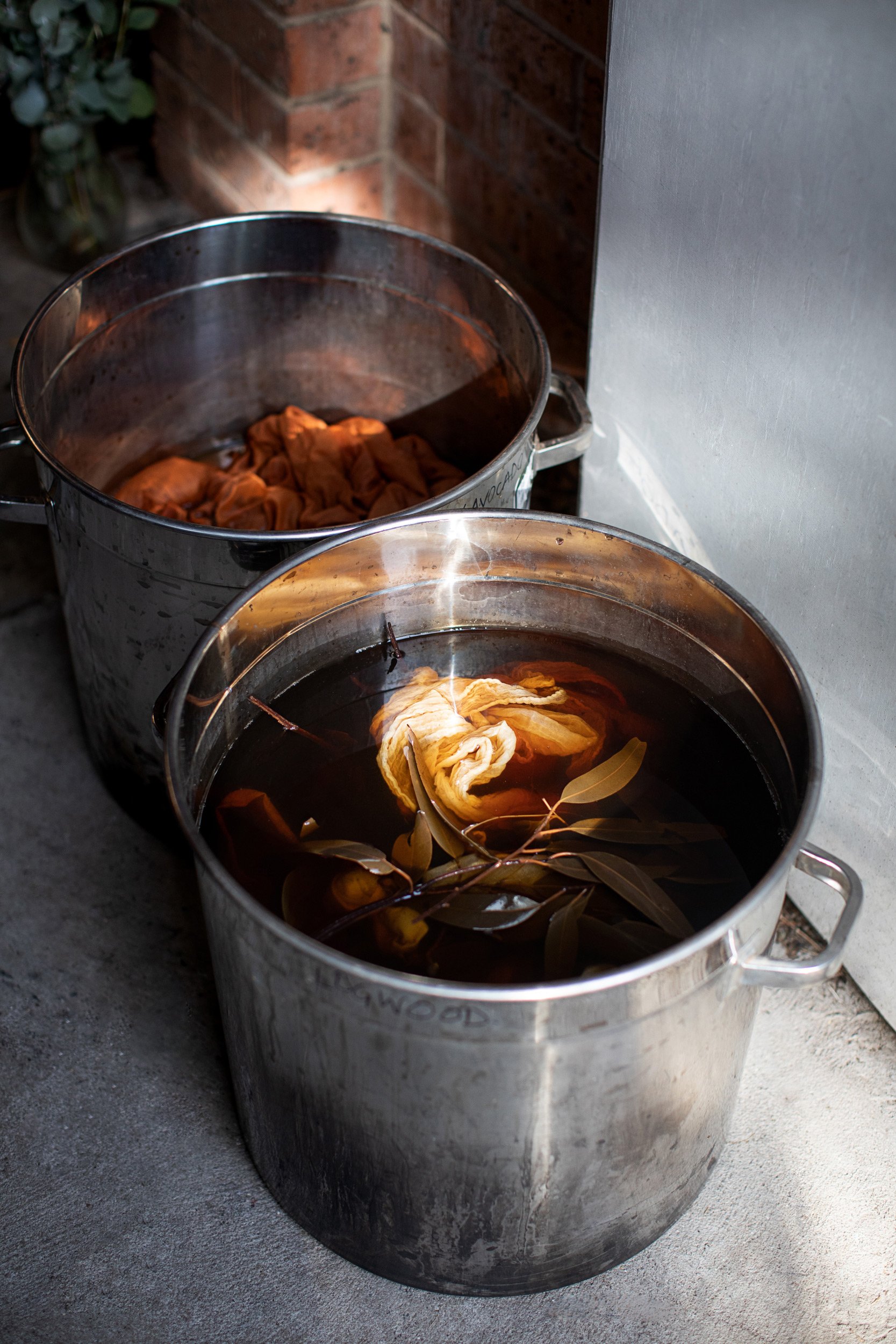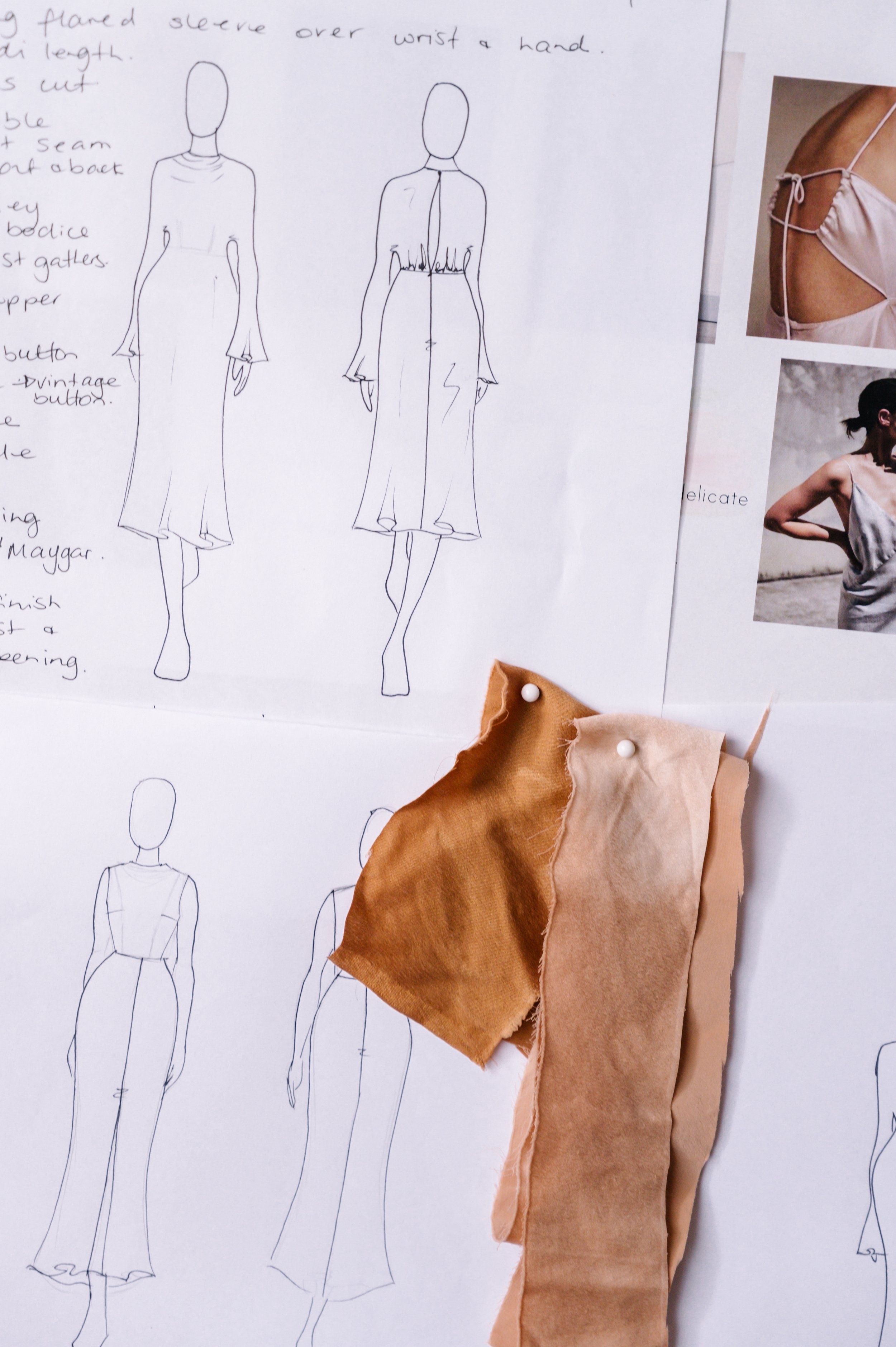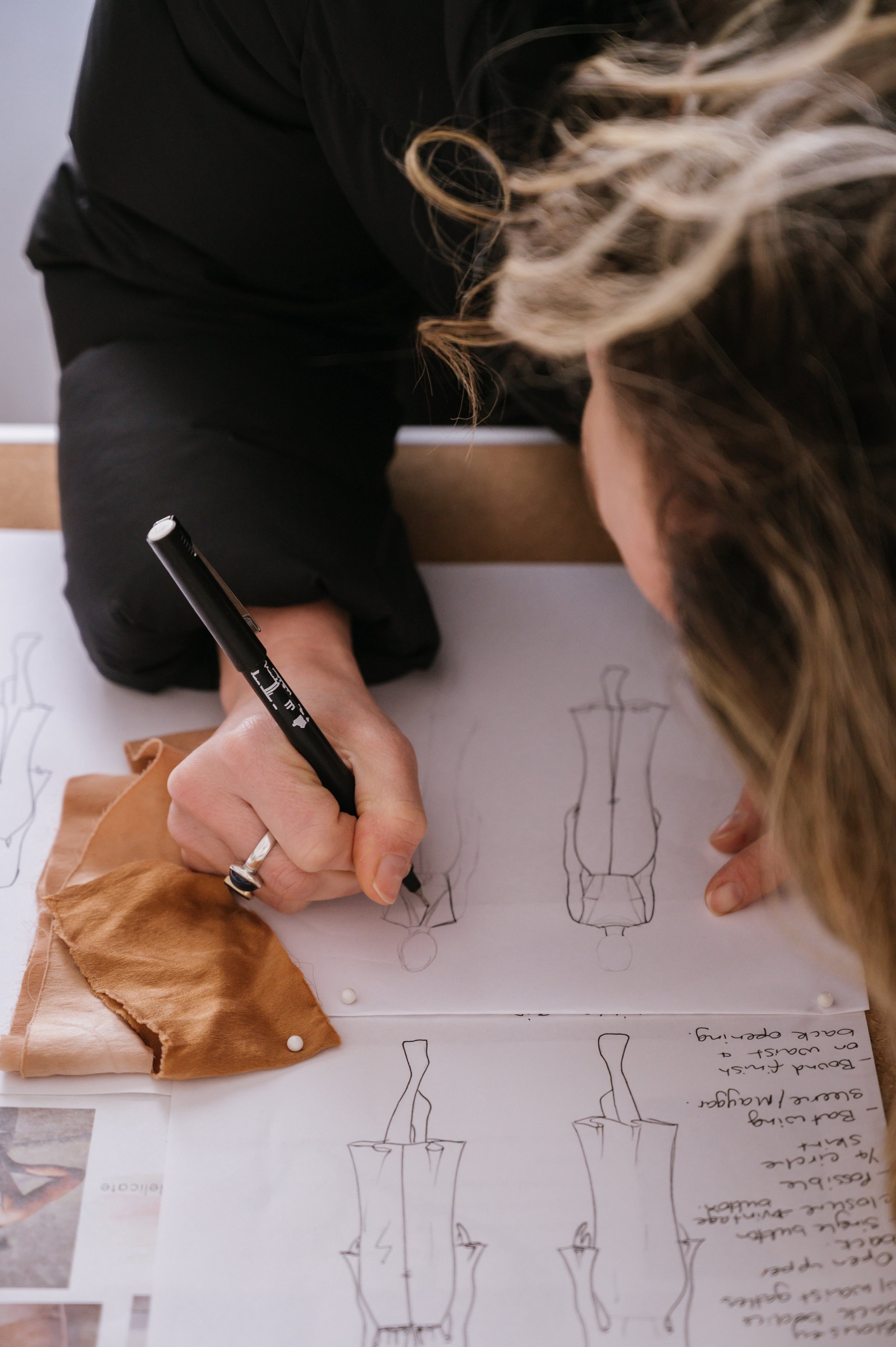Upcycled Wedding Dress with Natural Dyes
A CONVERSATION BETWEEN Sophie Douglas of Luna Joy AND Katie Wilkins of Studio Tinta.
Hello! Welcome to the journal, could you please tell my community a little about yourself and Studio Tinta?
Studio Tinta is a natural dye studio where I use all kinds of plants to dye natural fabrics like silk, linen and cotton. I commonly use items that I can find around me, like eucalyptus leaves, avocado stones and onion skins. I previously focused on making silk pillowcases, but I’m moving into the world of online teaching so I can help other people learn how to dye themselves.
What is your view on upcycling wedding gowns (or anything for that matter)?
Our culture has conditioned us to buy something new before we use what we already have. While we used to care for and mend our clothing, now we just throw it away because fast fashion is cheap and low quality. Having this relationship with our clothing means that textiles are ending up as landfill. Our earth can’t keep up with the waste we’re creating, or the resources it takes to keep making new things we don’t need. Upcycling and mending are just some of the ways we can make more sustainable choices when it comes to fashion. When we care for and love our clothing, it ends up having a longer life.
Absolutely, I think if we repair, reuse and recycle ,getting more life out of existing pieces, we needn’t buy as frequently, meaning we can invest in better quality pieces and ethical brands and hopefully break the cycle of fast fashion.
Why did you decide to upcycle your wedding gown?
Bridal wear is typically worn once because of the special occasion in which it is worn. I think we can all challenge ourselves to think outside the box as to how we can get more than one wear out of these pieces, which have used so many valuable resources to be produced. I often feel that ‘upcycled’ clothes get a bad wrap for being a bit daggy, so I wanted to show everyone that upcycling can actually be chic and fashionable too.
So you dyed the underskirt of my wedding gown which was a double layer of silk satin. My dress was dry cleaned just after my 2013 wedding and has been sitting in a box under my bed ever since. Over time silk can deteriorate or perish, and while it is a lovely sentiment that my daughter may wear my gown one day, she is only 5. I feel that she will have her own style and most likely will want to wear something all of her own, if she chooses to get married. Knowing the value and beauty of silk, it seemed at odds to me that all that fabric, which I would pay good money for, would go to waste over the next 20 or so years.
Originally my dress was an ivory silk satin until you dyed it, what did you use and what is the process involved?
I dyed your wedding dress with a natural dye extract called cutch. Silk is a beautiful fabric to use with natural dyes, so it was a fairly simple process. I created a dye bath and tied up the silk in different patterns to create the marbled effect. After about 24 hours in the pot I removed it and washed it in the machine. Then you worked your magic!
What was your design process involved in reworking your dress into a new piece?
There were a few unique factors that I needed to consider in the design process of this new piece that wouldn’t usually be a consideration when designing. Firstly since the fabric was once a gown and now in pieces, I was limited in which designs would work because of how clothes are typically cut and sewn. I also had to work around stains and damage caused to the silk from when I wore the gown originally, which considering my wedding was a bit wild it was in fairly good condition.
Also your dye work was so beautiful I wanted that to be a focus, so designing, cutting and sewing around the best dye patterns was important. In the end I chose to leave the skirt piece mostly as it was because it wore well and the dye pattern was incredible on the back. And lastly, but most importantly, I wanted the new piece to be something I would actually wear and that wouldn’t date. It would be pointless if I went to all this trouble and it hung in my wardrobe unworn. I’ve since decided to shorten the dress slightly so it’s more wearable everyday.
What are your tips for a bride wanting to dye their wedding dress at home?
Make sure you’ve washed your dress first and dye it when it’s already wet. Look for common dye plants you can find in your kitchen and garden, or if you’d like to experiment you can find some natural dyes online. You can make a dye bath, which is a lot like making a cup of tea. Or, you could use a process called bundle-dyeing which involves laying the plant material directly onto the fabric to permanently imprint the colours and shapes.
Obviously It’s also important that the fabric is a natural fibre like silk, linen or cotton. Perhaps be sure to remove any embellishments like sequins or beads and hardware like zippers or non-fabric buttons, right?
Absolutely.
What are your best tips for brides wanting to redesign or customise their gown?
If you have the design and sewing skills then consider all those factors I mentioned above like cut, dye patterns (if necessary) and quality of the fabric and what designs would realistically work. For example I really wanted a flared long sleeve but quickly realised there wasn’t enough fabric to make that work. Most importantly, think about your every day style and what design you would realistically wear. As with choosing a design or gown for your wedding day, if you choose a piece that makes you feel amazing and the best version of yourself you really can’t go wrong.
If you don’t have the design or sewing skills perhaps reach out to a local designer or dressmaker who may love to help you create that up-cycled magic.
Studio Tinta has just launched an online course can you tell us about it?
Natural Dye School is open until June 30! It’s an online course in natural dyeing for anyone wanting to use plant dyes to upcycle their old clothing (or wedding dress!) or dye unique fabric for sewing projects. It’s completely self-paced with no live classes, so you can complete the content in your own time. And you get lifetime access so you can come back again and again!
So what’s next for Luna Joy?
I have just finalised the designs for my next range which will be released in the later half of 2021. The new range is a micro-collection comprising of three complete looks of gowns and separates. When designing this range, among many factors , I considered how my pieces may be customised after they have been worn or even how they can be worn differently not in a bridal setting, so there are a few designs options in which that may be possible. I’ve also selected fabrics which are all natural or non-synthetic fibres so, for some pieces, if a bride wanted to dye their pieces they could sign up to your Natural Dye School and dye away!






